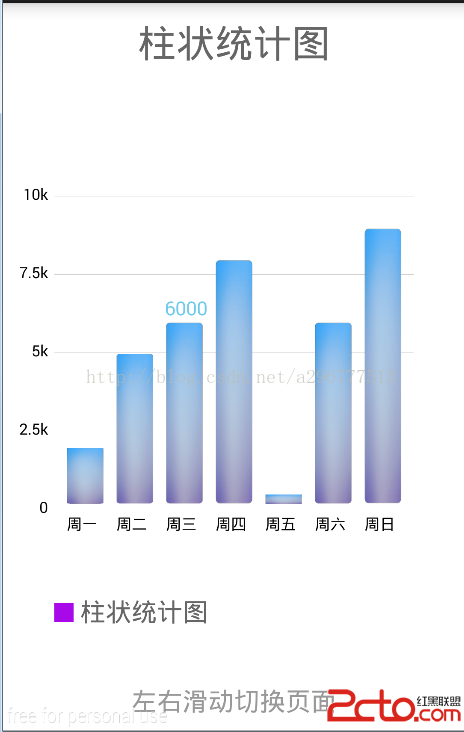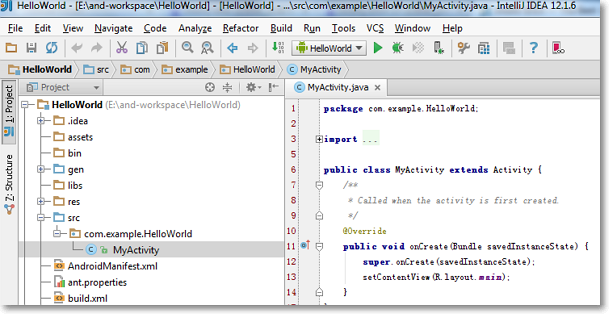編輯:關於Android編程
getActivity(Context, int, Intent, int), getBroadcast(Context, int, Intent, int), getService(Context, int, Intent, int) 分別對應著Intent的3個行為,跳轉到一個activity組件、打開一個廣播組件和打開一個服務組件。
參數有4個,比較重要的事第三個和第一個,其次是第四個和第二個。可以看到,要得到這個對象,必須傳入一個Intent作為參數,必須有context作為參數。Android的狀態欄通知(Notification)
如果需要查看消息,可以拖動狀態欄到屏幕下方即可查看消息。
步驟:
1 獲取通知管理器NotificationManager,它也是一個系統服務
2 建立通知Notification notification = new Notification(icon, null, when);
3 為新通知設置參數(比如聲音,震動,燈光閃爍)
4 把新通知添加到通知管理器
發送消息的代碼如下:
//獲取通知管理器
NotificationManager mNotificationManager = (NotificationManager) getSystemService(Context.NOTIFICATION_SERVICE)
int icon = android.R.drawable.stat_notify_chat;
long when = System.currentTimeMillis();//通知發生的時間為系統當前時間
//新建一個通知,指定其圖標和標題
Notification notification = new Notification(icon, null, when);//第一個參數為圖標,第二個參數為短暫提示標題,第三個為通知時間
notification.defaults = Notification.DEFAULT_SOUND;//發出默認聲音
notification.flags |= Notification.FLAG_AUTO_CANCEL;//點擊通知後自動清除通知
Intent openintent = new Intent(this, OtherActivity.class);
PendingIntent contentIntent = PendingIntent.getActivity(this, 0, openintent, 0);//當點擊消息時就會向系統發送openintent意圖
notification.setLatestEventInfo(this, “標題”, “我是內容", contentIntent);
mNotificationManager.notify(0, notification);//第一個參數為自定義的通知唯一標識
重點是setLatestEventInfo( )方法的最後一個參數!!!!它是一個PendingIntent!!!!!!!!!
這裡使用到了PendingIntent(pend本意是待定,不確定的意思)
PendingIntent可以看作是對Intent的包裝。PendingIntent主要持有的信息是它所包裝的Intent和當前Application的Context。正由於PendingIntent中保存有當前Application的Context,使它賦予帶他程序一種執行的Intent的能力,就算在執行時當前Application已經不存在了,也能通過存在PendingIntent裡的Context照樣執行Intent。
PendingIntent的一個很好的例子:
SmsManager的用於發送短信的方法:
sendTextMessage(destinationAddress, scAddress, text, sentIntent, deliveryIntent);
第一個參數:destinationAddress 對方手機號碼
第二個參數:scAddress 短信中心號碼 一般設置為空
第三個參數:text 短信內容
第四個參數:sentIntent判斷短信是否發送成功,如果你沒有SIM卡,或者網絡中斷,則可以通過這個itent來判斷。注意強調的是“發送”的動作是否成功。那麼至於對於對方是否收到,另當別論
第五個參數:deliveryIntent當短信發送到收件人時,會收到這個deliveryIntent。即強調了“發送”後的結果
就是說是在"短信發送成功"和"對方收到此短信"才會激活 sentIntent和deliveryIntent這兩個Intent。這也相當於是延遲執行了Intent
 自定義搜索功能Android實現
自定義搜索功能Android實現
先看看效果圖:源碼下載:自定義搜索功能代碼:SearchActivity.javapackage com.bzu.gxs.search.activity;import a
 Android自定義統計圖(柱狀圖,折線圖,餅狀圖)
Android自定義統計圖(柱狀圖,折線圖,餅狀圖)
最近由於項目需要,研究了一些統計圖的做法,開始時,看了很多博文,大部分都是引用第三方的庫,雖然簡單,易上手,但是功能太死板,有很多要求都是不能滿足的,所以經過研究,自己使
 Android自動提示控件AutoCompleteTextView
Android自動提示控件AutoCompleteTextView
在輸入框中輸入我們想要輸入的信息就會出現其他與其相關的提示信息,這種效果在Android中是用AutoCompleteTextView實現的。<AutoComple
 小米錢包怎麼提現 小米錢包提現方法
小米錢包怎麼提現 小米錢包提現方法
近期小米公司推出一款電子產品——《小米錢包》想必大家都有所耳聞吧。不過小編也在網上看到很多網友表示錢包內資金具體提現方法不是很熟悉,
 Intellij IDEA + Android SDK + Genymotion Emulator打造最佳Android開發環境
Intellij IDEA + Android SDK + Genymotion Emulator打造最佳Android開發環境
一直使用Eclipse環境開發Android,也嘗鮮使用過Android